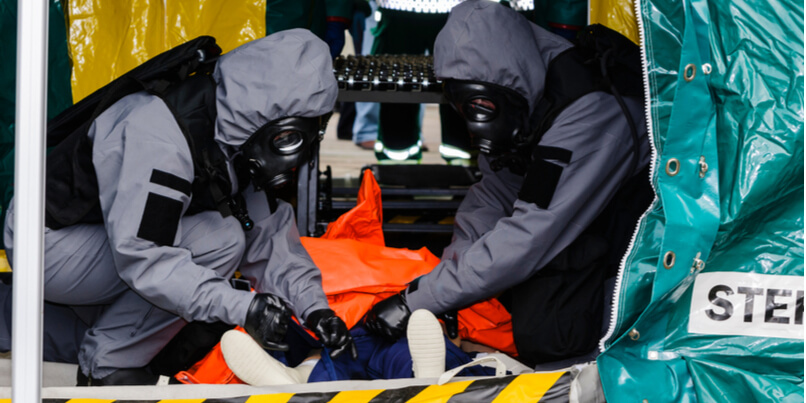 Situational awareness - or the ability to efficiently assess one's surroundings, to identify existing threats and to predict future events - is widely acknowledged as being an essential contributor to the effectiveness of CBRNe emergency response.
Situational awareness - or the ability to efficiently assess one's surroundings, to identify existing threats and to predict future events - is widely acknowledged as being an essential contributor to the effectiveness of CBRNe emergency response.
In this blog post we explore how the provision of realistic hands-on CBRNe training scenarios can play a key role in enhancing situational awareness to support decision-making, mitigate risk and save lives.
Defining situational awareness
The practice of situational awareness is most commonly divided into three distinct phases:
- Phase One - the ability to perceive individual environmental elements
- Phase Two - the ability to make sense of the current situation
- Phase Three - the ability to 'project' into the future by predicting what is likely to happen next
Interestingly, renowned US Career fire captain and EMS Coordinator, Rom Duckworth, adds a three further steps to this process - or what he aptly summarises as "knowing what is going on so you can figure out what to do."
- Phase Four - deciding what needs to be done
- Phase Five - taking the necessary action
- Phase Six - communicating and coordinating that action
Finding sense amidst the chaos
How effectively emergency responders are able to navigate through these phases of situational awareness isn't always as straight-forward as it might seem.
In extreme and challenging environments there can often be a barrage of information which can threaten the effectiveness of decision-making.
Many experts also believe that situational awareness is as much an innate mindset as it is a learned skill - in as much as it relies on 'trusting your gut instincts' to quickly take stock of your environment, to identify threats, and to take action.
A 2010 study into the 'Determinants of Paramedic Response Readiness for CBRNe Threats', for example, found that individual dispositional and psychological factors, such as fear or anxiety, had a direct impact on the readiness of emergency responders.
In contrast, an enhanced level of personal resilience was shown to directly increase the capacity and willingness to adapt under conditions of stress and to achieve better operational readiness.
Creating authentic training opportunities
Situational awareness is a skill that can be acquired and developed through actual and frequent exposure to live incidents.
But as emergency management professional Jason Pagan explains in his article for the online journal Domestic Preparedness, the frequency of real-life exposure to CBRNe events can vary considerably from person to person.
As he describes, some emergency personnel may be confronted with CBRNe incidents on many occasions throughout their careers - while others may go several years, or even longer, without having to face such extreme challenges.
It is for this reason that the provision of authentic hands-on training opportunities becomes so useful in providing a safe, controlled and easily repeatable training environment.
The value of hands-on training
In a December 2018 article for the online resource FireRescue1, retired career fire officer Linda Willing writes about the importance of paying specific attention to the development and the practice of situational awareness in the context of fire fighting.
In particular, she stresses how helpful hands-on scenarios can be in cementing this skill - whether it is through the holding of informal table-top discussion activities or the provision of realistic live-training events.
As Willing explains, hands-on training can often be perceived as being more logistically challenging or time-consuming to put together.
But the end result, she argues, is a more authentic, engaging and effective training experience.
Willing encourages the involvement of multiple agencies when conducting exercises - be it law enforcement, EMS or social services - so attendees have the opportunity to experience their training through a wider lens, with fewer assumptions and with a greater sense of the 'bigger picture'.
She also emphasises the value of holding post-incident debriefs (conducted by experienced facilitators) in order to provide trainees with useful feedback and to further cement the learning experience.
Situational awareness is a complex and multi-faceted skill - however it is one that can be nurtured, practiced and learned.
Having the opportunity to experience real-life CBRNe incidents is hugely important - as is the fostering of the right mindset through building psychological resilience.
And by adding the provision of realistic hands-on training to the mix, it is possible to further deepen trainee knowledge, to support the decision-making process and to enhance overall CBRNe preparedness.




